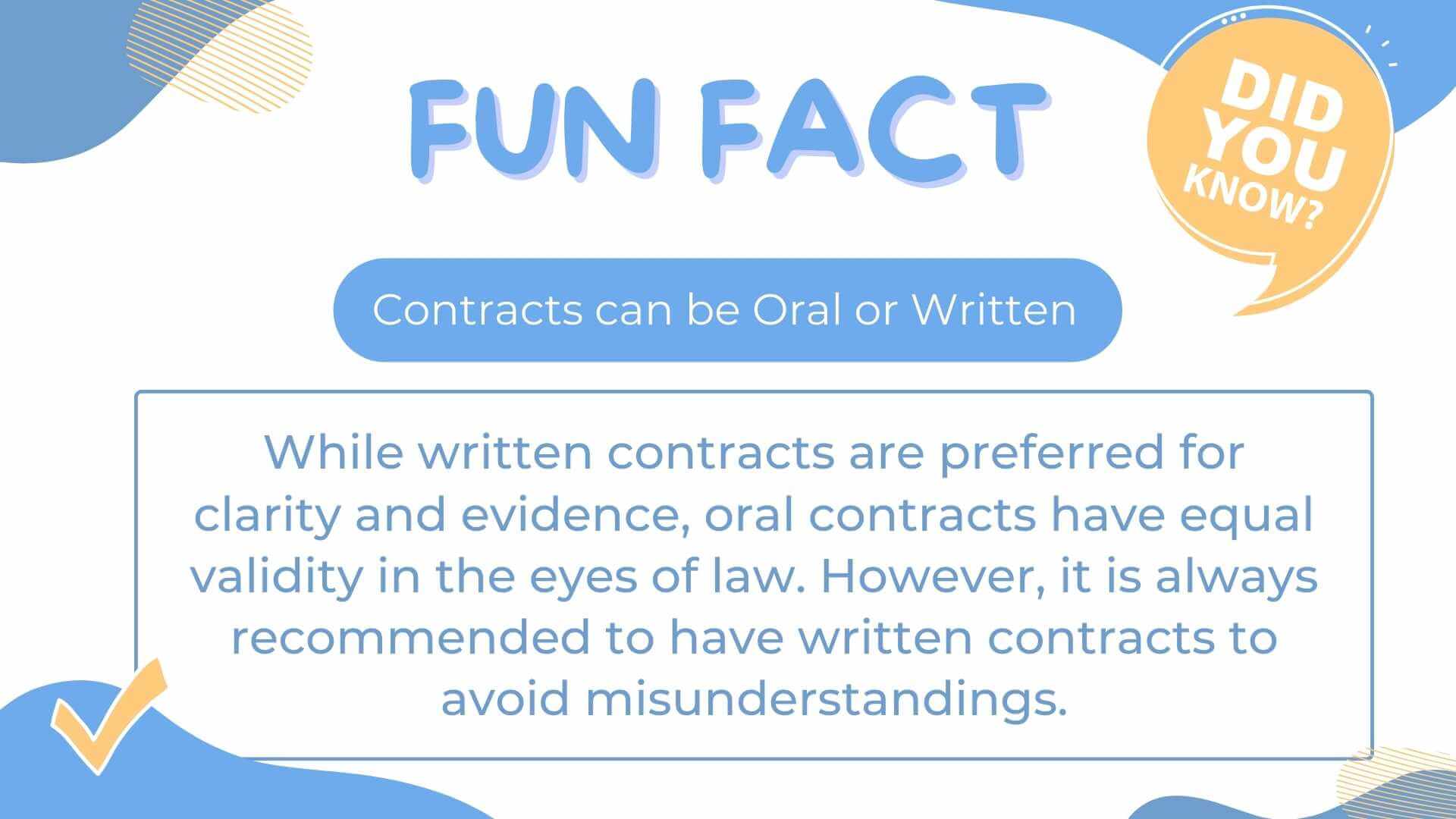Introduction to Contract Drafting
Welcome to our latest post on Mastering the Art of Contract Drafting, where we delve into the fascinating world of contract drafting. Even though we have written many articles on the various sub topics under this main topic, many users requested us to write a post, covering the the art of contract drafting from a bird eye perspective.
But before we go further, let's take a moment to appreciate the significance of contract drafting in various facets of our society. Here is a short poem appreciating the art of contract drafting.
"Contract and Clauses: A Playful Symphony"
Let's get back to the main topic, in this post, we will discuss everything you need to know to become a proficient contract drafter. We'll cover the key principles that underpin effective contract drafting, share valuable tips to enhance your drafting skills, and provide a curated list of resources to further your understanding.
Unveiling the Numbers: Insights into Contract Drafting
But wait, there's more! If you're someone who loves numbers and data, we've got you covered too. Throughout this article, we'll sprinkle in some interesting statistics and figures to provide you with a comprehensive view of the world of contract drafting.
So, whether you're an aspiring legal professional, a business owner, or simply someone interested in the intricacies of contract law, join us on this journey as we uncover the art of contract drafting. Get ready to gain valuable insights and practical knowledge that will empower you to create robust and effective contracts. Let's dive in!
Principles of Effective Contract Drafting
To create an effective contract, several fundamental principles must be considered. Clarity, precision, consistency, and completeness are the cornerstones of a well-drafted agreement. Clarity ensures that the contract is easily understood by all parties involved. Precision eliminates ambiguity and clearly defines rights, obligations, and remedies. Consistency ensures uniformity throughout the document, while completeness guarantees that all necessary provisions are included.
In applying these principles, consider using simple and concise language, avoiding jargon or complex terms that may confuse the parties. Provide clear definitions for terms used in the contract and maintain consistent terminology throughout the document. Ensure that the contract covers all essential aspects and addresses potential scenarios that may arise during the contractual relationship.

Best Practices for Drafting a Comprehensive and Enforceable Agreement
-
Clarity is Key
I still remember first class on contract drafting in my law school. My faculty walked in and without saying any words just wrote on backboard “Clarity is Key”. I couldn't agree more with her. Clarity ensures that the contract is easily understood by all parties involved. Avoid using ambiguous or vague language that could lead to misinterpretation or confusion. Define the deliverables, timelines, warranties, liability, indemnity, and termination provisions clearly. Clear terms and conditions define the rights and obligations of each party in a straightforward manner. These provisions lay the groundwork for the entire contract and outline the expectations and responsibilities of each party involved.
By establishing clear terms and conditions, parties can minimise the risk of disputes and ensure that both sides understand their obligations and the consequences of non-compliance.
-
Identification
In the initial stage of the agreement, all parties involved must disclose their respective identities. According to the law, a contract necessitates up-to-date information in the following categories to enable the parties involved to locate each other in the event of a dispute:
For businesses:
- Full legal name
- Registered office address
- Registration number
- Country of practice
For individuals:
- Full legal name
- Full address
- Trading name
- ID number
Since most contract involves two parties, it is customary to identify them by name at the beginning of the document, along with their titles and addresses. For instance:
"This agreement is between Rakesh Kumar, referred to as 'Homeowner,' and Construction Company, referred to as 'Company,' for the purpose of remodeling the Homeowner's residence at 420, Chor Galli, Naya Mauhall, India" This clause, known as the "contractual parties clause," organises the parties' information and eliminates redundancies.

-
Precise Definitions
Clear definitions are crucial in contract drafting. Define key terms and concepts to ensure that there is no ambiguity or misunderstanding. A well-defined contract leaves no room for interpretation and minimizes the risk of disputes.
-
Payment and its Schedule
Consideration or payment represents a commitment to perform or refrain from performing a certain action in exchange for something else. Specifying the payment structure, including the amount, currency, due dates, and methods of payment, ensures transparency and avoids misunderstandings. An offer is not technically valid until it is received by the party to whom it is directed. Once received, the offer can be accepted, modified, revoked, or terminated.
If a counter-offer is made, the original offer is terminated, and the parties must engage in negotiation once again. An invitation to treat, although it may resemble an offer, is not considered as one. An invitation to treat is an invitation extended to another party to make an offer and is commonly used in real estate, marketing, and automobile sales.
-
Compliance with Applicable Laws
Contracts must comply with relevant laws and regulations. Research and understand the legal framework related to your agreement and ensure that the contract aligns with these requirements. Consulting with legal professionals can help you navigate any legal complexities.
-
Consideration of Future Events
Contracts often have a long-term impact, and it is essential to consider future events and circumstances. Include provisions that account for changes, such as termination, renewal, or modification of the agreement. By addressing potential future scenarios, you create a flexible and adaptive contract.
-
Dispute Resolution Mechanisms
Dispute resolution mechanisms are essential components of a well-drafted contract. Including provisions for resolving disputes, such as mediation, arbitration, or litigation, provides a roadmap for handling conflicts in a fair and efficient manner.
Clearly stating the applicable jurisdiction and the process for dispute resolution helps parties avoid potential conflicts down the line. By establishing a predetermined method for resolving disputes, parties can save time, effort, and resources that would otherwise be wasted on lengthy legal battles.
Including a dispute resolution clause in a contract demonstrates the parties' commitment to resolving issues amicably and underscores their willingness to find mutually agreeable solutions.
Further Resources for Contract Drafting
When it comes to mastering the art of contract drafting, there are several valuable resources available that can help you understand the essential principles, provide useful tips, and offer additional references. Here are some of the best resources you can utilize to enhance your contract drafting skills:
-
Books
- "A Manual of Style for Contract Drafting" by Kenneth A. Adams: This book provides comprehensive guidance on contract language and structure, offering practical tips to draft clear and effective contracts.
- "Drafting Contracts: How and Why Lawyers Do What They Do" by Tina L. Stark: This resource explores the fundamentals of contract drafting, including drafting techniques and the reasoning behind various provisions.
- "Contract Drafting and Negotiation for Entrepreneurs and Business Professionals" by Paul A. Swegle: Aimed at non-lawyers, this book covers the basics of contract drafting and negotiation in a user-friendly manner.
-
Online Platforms
Websites like Amto AI, Westlaw, LexisNexis, and Bloomberg Law provide access to a wide range of legal resources, including sample contract templates, case law, and legal commentary. Utilizing these databases can help you stay updated on current legal standards and drafting best practices.
Many legal software platforms offer a wide range of contract templates and forms that can serve as a starting point for drafting contracts. However, exercise caution and tailor these templates to your specific needs and jurisdiction.
-
Legal Writing Courses
onsider enrolling in legal writing courses or workshops offered by reputable institutions or online platform such as Fusion Law School and Udemy. These courses can provide in-depth instruction on contract drafting techniques, legal analysis, and effective communication in legal writing.
Check with your local bar association or law schools for programs focused on contract drafting. These programs often feature experienced practitioners who share their insights and best practices.
-
Mentoring and Feedback
Engage with experienced contract drafters within your professional network. They can provide valuable guidance, share practical tips, and review your drafts to help you improve
To utilize these resources effectively, consider the following tips:
- Start by reading books or pursue an online course on contract drafting to gain a solid foundation in the essential principles.
- Explore online platforms and search for specific topics or issues you want to address in your contracts.
- Attend local seminary or webinars to learn from experts and stay updated on the latest developments in contract drafting.
- When using contract templates or forms, ensure that you review and customize them to align with your specific requirements and jurisdiction.
- Seek feedback from experienced professionals and incorporate their suggestions to enhance your skills.
Conclusion
In conclusion, developing proficiency in contract drafting is essential for legal professionals, entrepreneurs, and individuals navigating agreements. By following the fundamental principles, incorporating useful tips, and utilizing recommended resources, you can enhance your contract drafting skills and create agreements that are clear, comprehensive, and enforceable.
Remember, mastering the art of contract drafting takes practice and continuous improvement. Regularly reviewing and analyzing well-drafted contracts, staying updated on legal developments, and seeking feedback from experienced professionals will contribute to your growth as a skilled contract drafter.



